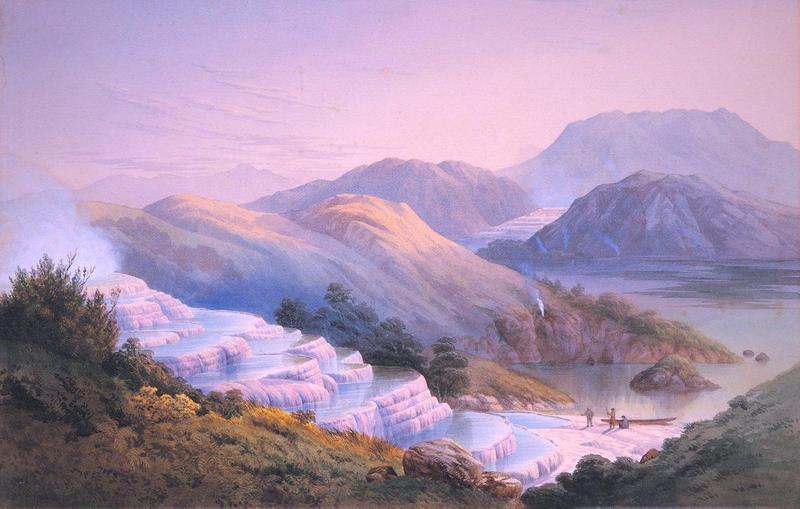Researchers Discover the Long-Lost Eighth Natural Wonder of the World
Researchers Discover the Long-Lost Eighth Natural Wonder of the World

Once called the “eighth wonder of the world,” the shimmering silica terraces on Lake Rotomahana drew thousands of awestruck tourists to New Zealand’s North Island during Victorian times. But in June 1886, nearby Mount Tarawera erupted, smothering the famed terraces under piles of ash and rubble. Now, two researchers say they have pinpointed the location of the buried Pink and White Terraces by painstakingly studying field diaries kept by the German-Austrian geologist Ferdinand von Hochstetter, who surveyed the region in 1859.
Located on the shores of Lake Rotomohana, the Pink and White Terraces were formed over many hundreds of years from silica deposits left by the flowing waters of two hot springs. Beginning in the 1830s, these natural wonders—known respectively as Te Otukapuarangi (Maori for “fountain of the clouded sky”) and Te Tarata (“the tattooed rock”)—attracted thousands of tourists to New Zealand’s North Island. These well-to-do visitors and their guides gawked at the terraces’ cascading pools, and even bathed in the purifying waters, leaving vivid accounts of their experiences.
Then came the events of June 10, 1886, when nearby Mount Tarawera erupted, spewing volcanic ash as far as the Bay of Plenty, nearly 40 km away. The eruption buried a number of local villages and took the lives of more than 120 people, mostly Maori. Though it appeared the blast from Tarawera destroyed the famed silica terraces, debate has persisted over whether they may have somehow survived, deep beneath the lake’s surface.
Two researchers, Rex Bunn and Dr. Sascha Nolden, now believe they have pinpointed the location of the Pink and White Terraces, based on detailed analysis of the field diaries compiled by the German-Austrian geologist Ferdinand von Hochstetter on his 1859 survey of the region. According to their findings, published in the Journal of the Royal Society of New Zealand, the terraces are not on the bottom of Lake Rotomahana, as previously believed, but can be found some 10-15 meters beneath the surface, near the lake’s shoreline.
Considered the father of New Zealand geology, Hochstetter was hired by the country’s government to make a geological survey of the islands in 1859. As Hannah Martin reported in the Sunday Star Times, Nolden was curating an exhibition about Hochstetter at the Auckland City Library in 2010 when he came across the geologist’s field notebooks from the expedition, which plotted the bearings of Lake Rotomahana and the Pink and White Terraces.
After Nolden shared Hochstetter’s diaries with Bunn, the two men painstakingly reverse-engineered the survey and figured out estimated locations for the now-buried terraces, with a margin of error of 35 meters. Bunn told the Guardian the researchers are now in the process of raising money for a full exploration of the site, and are in talks with the local Tuhourangi Tribal Authority, the ancestral owners of the land, as they move forward with the project.
The Pink and White Terraces previously made news back in 2011, when scientists from the University of Waikato and the Woods Hole Oceanographic Institute announced they had found remnants of the Pink Terraces on the lake floor. (The eruption of Mount Tarawera changed the shape of Lake Rotomohana, greatly extending its length and raising its surface.) But last year, GNS Science New Zealand announced that despite these tantalizing remnants, a five-year investigation led scientists to conclude that most of both the Pink and White Terraces had in fact been destroyed during the volcanic eruption.
Bunn told the Guardian he is in discussions with GNS, and believes their scientists were working with incorrect cartographical information. So stay tuned—if Bunn and Nolden’s calculations, based on Hochstetter’s diaries, turn out to be correct, these natural wonders may rise again.
Be the first to post a message!